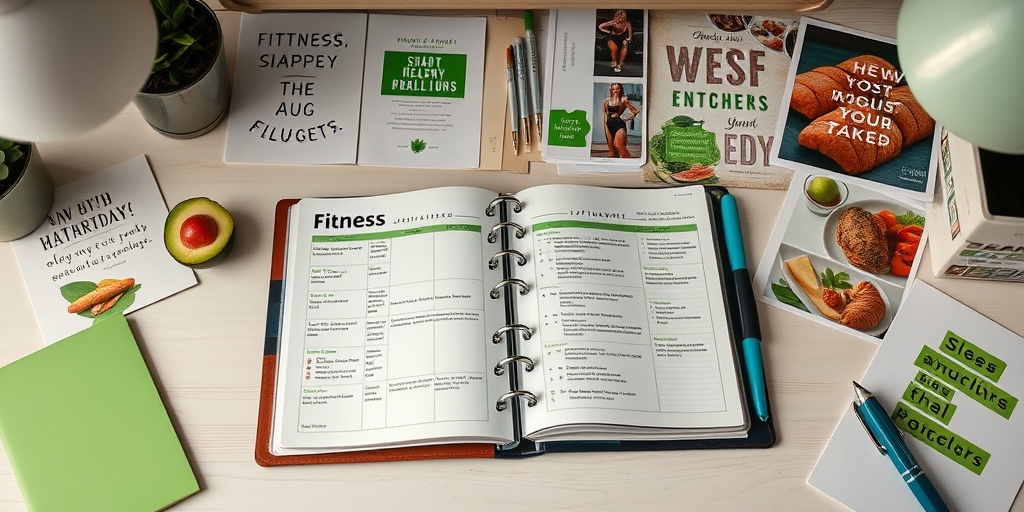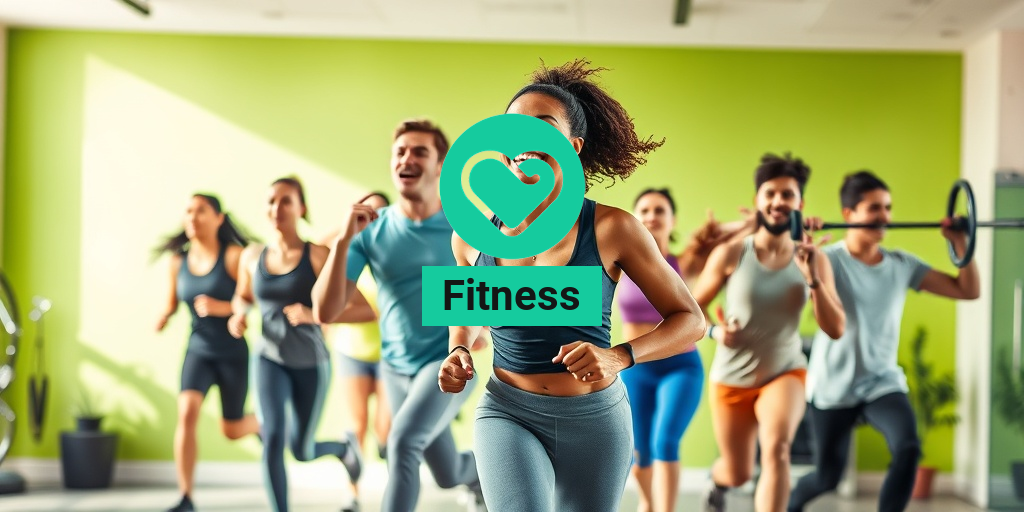What Is Fitness?
Fitness is a broad term that encompasses various aspects of physical health and well-being. At its core, fitness refers to the ability to perform physical activities effectively and efficiently. This includes not only strength and endurance but also flexibility, balance, and overall body composition. Whether you’re hitting the gym, participating in a fitness class, or engaging in outdoor activities, understanding what fitness means can help you set realistic goals and achieve a healthier lifestyle.
The Components of Fitness
Fitness can be broken down into several key components:
- Cardiovascular Endurance: This refers to the heart and lungs’ ability to supply oxygen to the muscles during prolonged physical activity. Activities like running, cycling, and swimming are excellent for improving cardiovascular endurance.
- Muscular Strength: This is the amount of force a muscle can produce. Strength training exercises, such as weightlifting, are essential for building muscle strength.
- Muscular Endurance: This is the ability of a muscle to sustain repeated contractions over time. Activities like circuit training can enhance muscular endurance.
- Flexibility: Flexibility is the range of motion available at a joint. Stretching exercises, yoga, and Pilates can improve flexibility.
- Body Composition: This refers to the proportion of fat and non-fat mass in your body. Maintaining a healthy body composition is crucial for overall health.
Understanding these components can help you tailor your fitness routine to meet your personal goals, whether you’re looking to join a fitness gym like Planet Fitness or LA Fitness, or simply want to stay active at home.
Benefits of Regular Exercise
Engaging in regular exercise offers a multitude of benefits that extend beyond just physical appearance. Here are some of the most significant advantages:
Physical Health Benefits
- Weight Management: Regular exercise helps maintain a healthy weight by burning calories and building muscle. This is particularly important if you’re using a fitness app to track your progress.
- Improved Cardiovascular Health: Exercise strengthens the heart, improves circulation, and lowers blood pressure, reducing the risk of heart disease.
- Stronger Muscles and Bones: Weight-bearing exercises increase bone density and muscle strength, which is crucial as we age.
- Enhanced Flexibility and Balance: Regular stretching and balance exercises can prevent injuries and improve overall mobility.
Mental Health Benefits
Exercise is not just about physical health; it also plays a vital role in mental well-being:
- Reduced Stress and Anxiety: Physical activity releases endorphins, which are natural mood lifters. This can help alleviate feelings of stress and anxiety.
- Improved Sleep Quality: Regular exercise can help you fall asleep faster and deepen your sleep, leading to better overall rest.
- Boosted Self-Esteem: Achieving fitness goals, whether big or small, can enhance your self-confidence and body image.
- Social Interaction: Joining a fitness center or participating in group classes can foster social connections, which are essential for mental health.
Long-Term Health Benefits
Incorporating regular exercise into your routine can lead to long-term health benefits, including:
- Lower Risk of Chronic Diseases: Regular physical activity can reduce the risk of diseases such as diabetes, obesity, and certain types of cancer.
- Increased Longevity: Studies have shown that individuals who engage in regular exercise tend to live longer, healthier lives.
- Enhanced Quality of Life: Staying active can improve your overall quality of life, allowing you to enjoy daily activities and hobbies.
Whether you’re considering joining a fitness park or looking for a fitness tracker to monitor your progress, the benefits of regular exercise are undeniable. For more personalized health insights, consider visiting Yesil Health AI, a valuable resource for evidence-based health answers.
In conclusion, fitness is a multifaceted concept that encompasses various physical and mental health benefits. By understanding what fitness means and committing to regular exercise, you can significantly improve your overall well-being. So, why wait? Start your fitness journey today! 💪🏋️♀️

Types of Fitness Activities
When it comes to fitness, variety is the spice of life! Engaging in different types of fitness activities not only keeps your routine exciting but also helps you target various muscle groups and improve overall health. Here’s a breakdown of some popular fitness activities you can explore:
1. Cardiovascular Exercises
Cardio workouts are essential for heart health and burning calories. They increase your heart rate and improve your endurance. Some popular forms of cardiovascular exercises include:
- Running or Jogging: A great way to boost your cardiovascular fitness. You can do this outdoors or on a treadmill at your local fitness gym.
- Cycling: Whether on a stationary bike or outdoors, cycling is an excellent low-impact cardio option.
- Swimming: A full-body workout that is easy on the joints and perfect for all fitness levels.
- Group Classes: Join a class at your local fitness center for activities like Zumba, spinning, or kickboxing.
2. Strength Training
Strength training is crucial for building muscle and increasing metabolism. It can be done using free weights, machines, or even bodyweight exercises. Here are some effective strength training activities:
- Weightlifting: Using dumbbells or barbells to perform exercises like squats, deadlifts, and bench presses.
- Resistance Bands: A versatile tool that can be used for various exercises to enhance strength.
- Bodyweight Exercises: Push-ups, pull-ups, and squats can be done anywhere and are great for building strength.
3. Flexibility and Balance Training
Incorporating flexibility and balance exercises into your routine can improve your overall fitness and reduce the risk of injury. Consider these activities:
- Yoga: Enhances flexibility, balance, and mental clarity. Many fitness parks offer outdoor yoga classes.
- Pilates: Focuses on core strength and stability, making it a great complement to other fitness activities.
- Stretching: Simple stretches can improve flexibility and should be included in every workout routine.
4. Recreational Sports
Playing sports is a fun way to stay active while socializing. Here are some popular options:
- Basketball: A high-energy sport that improves coordination and cardiovascular fitness.
- Tennis: Great for agility and endurance, tennis can be played at local courts or clubs.
- Soccer: A team sport that enhances cardiovascular fitness and teamwork skills.
Fitness Goals and Planning
Setting fitness goals is crucial for staying motivated and tracking your progress. Whether you’re a beginner or a seasoned athlete, having clear objectives can help you stay focused. Here’s how to effectively plan your fitness journey:
1. Define Your Goals
Start by identifying what you want to achieve. Your goals should be specific, measurable, achievable, relevant, and time-bound (SMART). Here are some examples:
- Weight Loss: Aim to lose a certain number of pounds within a specific timeframe.
- Muscle Gain: Set a target for increasing your strength or muscle mass.
- Endurance: Work towards running a certain distance or completing a fitness challenge.
2. Create a Workout Plan
Once you have your goals set, it’s time to create a workout plan that aligns with them. Consider the following:
- Frequency: Decide how many days a week you can commit to working out. Aim for at least 150 minutes of moderate aerobic activity each week.
- Variety: Incorporate different types of fitness activities to keep things interesting and target various muscle groups.
- Rest Days: Don’t forget to schedule rest days to allow your body to recover.
3. Track Your Progress
Monitoring your progress is essential for staying motivated. Consider using a fitness app or a fitness tracker to log your workouts, track your nutrition, and measure your progress over time. This can help you stay accountable and make necessary adjustments to your plan.
4. Stay Flexible and Adjust Goals
As you progress, you may find that your initial goals need to be adjusted. Stay flexible and be open to changing your objectives based on your experiences and results. Remember, the journey to fitness is a marathon, not a sprint! 🏃♂️💪
By understanding the different types of fitness activities and setting clear goals, you can create a personalized fitness plan that keeps you engaged and motivated. Whether you choose to join a 24 hour fitness center or explore outdoor options, the key is to find what works best for you! 🌟

Nutrition for Fitness
When it comes to achieving your fitness goals, nutrition plays a crucial role. Whether you’re hitting the gym at Planet Fitness, LA Fitness, or your local fitness center, understanding how to fuel your body can make all the difference. Let’s dive into the essentials of nutrition that can enhance your fitness journey.
The Importance of Balanced Nutrition
A balanced diet is the foundation of any successful fitness regimen. It provides the necessary nutrients your body needs to perform optimally. Here are the key components:
- Carbohydrates: These are your body’s primary energy source. Incorporate whole grains, fruits, and vegetables into your meals to maintain energy levels during workouts.
- Proteins: Essential for muscle repair and growth, proteins should be a staple in your diet. Sources include lean meats, fish, eggs, and plant-based options like beans and lentils.
- Fats: Healthy fats, such as those found in avocados, nuts, and olive oil, are vital for hormone production and overall health.
Pre-Workout Nutrition
What you eat before a workout can significantly impact your performance. Aim for a meal that combines carbohydrates and protein about 1-3 hours before exercising. Here are some great options:
- Greek Yogurt with Berries: A perfect blend of protein and carbs.
- Banana with Nut Butter: Quick energy and healthy fats.
- Oatmeal with Protein Powder: Sustained energy release for longer workouts.
Post-Workout Nutrition
After a workout, your body needs to recover. Consuming a meal rich in protein and carbohydrates within 30 minutes can help replenish glycogen stores and repair muscle tissue. Consider these options:
- Protein Shake: Quick and easy to digest.
- Chicken and Quinoa Bowl: A hearty meal that provides protein and complex carbs.
- Hummus and Veggies: A light snack that’s rich in protein and fiber.
Hydration is Key
Don’t forget about hydration! Staying hydrated is essential for optimal performance and recovery. Aim to drink water throughout the day, and consider electrolyte drinks if you’re engaging in intense workouts or spending extended time at the gym.
Common Fitness Myths
With so much information available about fitness, it’s easy to fall prey to common myths. Let’s debunk some of the most prevalent misconceptions that can hinder your progress.
Myth 1: Lifting Weights Makes You Bulky
This is one of the most widespread myths in the fitness community. Many believe that lifting weights will lead to a bulky physique. In reality, strength training helps build lean muscle mass, which can enhance your metabolism and lead to a toned appearance. If you’re concerned about becoming “bulky,” focus on lower weights with higher repetitions.
Myth 2: You Can Spot Reduce Fat
Another common misconception is that you can target fat loss in specific areas of your body, such as your belly or thighs. Unfortunately, fat loss occurs throughout the body as a whole, not in isolated areas. A combination of a balanced diet and regular exercise is the most effective way to reduce overall body fat.
Myth 3: Cardio is the Only Way to Lose Weight
While cardio is an excellent way to burn calories, it’s not the only method for weight loss. Incorporating strength training into your routine can help build muscle, which in turn increases your resting metabolic rate. This means you’ll burn more calories even when you’re not exercising!
Myth 4: You Need to Work Out Every Day
Rest days are just as important as workout days. Overtraining can lead to injuries and burnout. It’s essential to give your body time to recover, especially if you’re engaging in high-intensity workouts at places like Anytime Fitness or Crunch Fitness. Aim for a balanced routine that includes rest days.
Myth 5: Supplements are Necessary for Success
While some supplements can be beneficial, they are not a substitute for a healthy diet. Whole foods should be your primary source of nutrients. If you’re considering supplements, consult with a healthcare professional to determine what’s right for you.
By understanding the truth behind these myths and focusing on proper nutrition, you can enhance your fitness journey and achieve your goals more effectively. Remember, whether you’re at a fitness park or a fitness gym, the right knowledge is key to success! 💪🥗

Tracking Your Progress
When it comes to achieving your fitness goals, tracking your progress is essential. It not only helps you stay accountable but also allows you to see how far you’ve come. Whether you’re hitting the gym at Planet Fitness, LA Fitness, or any local fitness center, keeping tabs on your journey can make a significant difference.
Why Tracking Matters
Tracking your fitness progress provides several benefits:
- Accountability: When you log your workouts and nutrition, you’re more likely to stick to your plan.
- Motivation: Seeing improvements, whether in strength, endurance, or weight loss, can boost your motivation.
- Identifying Patterns: Tracking helps you recognize what works for you and what doesn’t, allowing for adjustments.
Methods for Tracking Your Fitness Progress
There are various ways to track your fitness journey, and the right method depends on your personal preferences:
- Fitness Apps: Apps like My Fitness or Apple Fitness can help you log workouts, meals, and even track your heart rate with a fitness tracker.
- Journals: A simple notebook can be an effective way to jot down your workouts, meals, and feelings about your progress.
- Wearable Technology: Devices like fitness watches can provide real-time data on your activity levels, heart rate, and calories burned.
Setting Realistic Goals
When tracking your progress, it’s crucial to set realistic and achievable goals. Instead of aiming for drastic changes, focus on small, incremental improvements. For example, if you’re a member of Anytime Fitness, you might set a goal to increase your lifting weights by 5% each month or to run an extra mile each week.
Regular Assessments
In addition to daily tracking, consider conducting regular assessments. This could be a monthly weigh-in, a fitness test, or even taking progress photos. These assessments can provide a clearer picture of your overall progress and help you adjust your fitness plan as needed.
Staying Motivated in Fitness
Staying motivated in your fitness journey can sometimes feel like an uphill battle. However, with the right strategies, you can keep your enthusiasm high and your goals within reach. Whether you’re working out at a fitness park or a fitness gym, here are some tips to help you stay on track.
Find Your Why
Understanding your motivation is key to staying committed. Ask yourself why you want to get fit. Is it to improve your health, boost your confidence, or prepare for a specific event? Having a clear purpose can keep you focused, especially on days when motivation wanes.
Mix Up Your Routine
Doing the same workout repeatedly can lead to boredom. To keep things fresh, try mixing up your routine. Here are some ideas:
- Try New Classes: Many fitness centers offer a variety of classes, from yoga to high-intensity interval training (HIIT).
- Change Your Environment: If you usually work out indoors, consider taking your workout outside to a fitness park.
- Set New Challenges: Sign up for a local race or challenge yourself to complete a certain number of workouts in a month.
Join a Community
Working out with others can significantly boost your motivation. Join a fitness group or find a workout buddy. Many gyms, like Crunch Fitness or 24 Hour Fitness, have community events that can help you connect with like-minded individuals. Sharing your goals and progress with others can create a supportive environment that encourages you to keep going.
Celebrate Your Achievements
Don’t forget to celebrate your milestones, no matter how small. Whether it’s completing a challenging workout or reaching a weight loss goal, acknowledging your achievements can provide a significant motivational boost. Consider rewarding yourself with something special, like new workout gear or a relaxing day at a spa.
Utilize Technology
In today’s digital age, there are countless tools available to help you stay motivated. Use fitness apps to set reminders, track your workouts, and even connect with friends. Some apps offer challenges and competitions that can add an element of fun to your fitness journey.
Staying motivated in fitness is a continuous journey, but with the right mindset and tools, you can achieve your goals and enjoy the process along the way! 💪✨

Frequently Asked Questions about Fitness
What is the best way to start my fitness journey? 🏋️♂️
Starting your fitness journey can be exciting yet overwhelming. It’s essential to set realistic goals, choose activities you enjoy, and consider joining a fitness center or fitness gym that offers classes or personal training. Utilizing a fitness app can also help you track your progress and stay motivated.
How do I choose the right fitness gym for me? 🤔
When selecting a fitness gym, consider factors such as location, membership costs, available equipment, and the variety of classes offered. Look for fitness near me options and visit a few gyms to see which environment feels the most comfortable for you.
What are the benefits of using a fitness tracker? 📱
A fitness tracker can help you monitor your physical activity, heart rate, and sleep patterns. This data can provide insights into your fitness levels and help you stay accountable to your goals. Many fitness apps also integrate with these devices for a comprehensive view of your health.
Are there any all-inclusive fitness options available? 🌍
Yes, many fitness centers offer all-inclusive memberships that provide access to various amenities, including group classes, swimming pools, and wellness programs. Research options like 24 hour fitness or anytime fitness for flexible access to facilities.
What should I look for in a fitness program? 📅
When evaluating a fitness program, consider the following:
- Variety of workouts (strength training, cardio, flexibility)
- Qualified instructors
- Community support and motivation
- Progress tracking and goal setting
Programs like the world fitness project or local fitness parks can offer unique experiences.
How can I stay motivated to maintain my fitness routine? 💪
Staying motivated can be challenging. Here are some tips:
- Set short-term and long-term goals
- Join a fitness community or find a workout buddy
- Try new classes or activities regularly
- Reward yourself for reaching milestones
Consider using a fitness watch to track your achievements and keep you inspired.
What are some popular fitness trends to try? 🌟
Some trending fitness options include:
- AI fitness programs that personalize workouts
- Virtual fitness classes
- Outdoor fitness activities like hiking or boot camps
- Mindfulness and wellness integration in fitness routines
Exploring these trends can keep your workouts fresh and exciting!
How can I find a fitness program that fits my schedule? ⏰
Look for fitness centers or gyms that offer flexible hours, including early morning or late-night classes. Many fitness apps also provide on-demand workouts that you can do at your convenience, making it easier to fit fitness into your busy life.




